Seoseoul Lake Park (서서울호수공원)
2022-10-19
20, Nambusunhwan-ro 64-gil, Yangcheon-gu, Seoul
+82-2-2604-3004
Covering over 225,000 ㎡ of land in the southwestern part of Seoul, Seoseoul Lake Park, also known as West Lake Park, was to resolve the regional imbalance in the city. The park is a eco-friendly park designed with the themes of "water" and "recycling." Before turning into a park, the area was used as a purification plant that produced approximately 120,000 tons of tap water to Seoul. The park has a children's playground, sports facilities like the soccer field, basketball court and badminton courts, and a cultural plaza. With its vast space and 24-hour operation, the park provides a relaxing ground for the citizens of Seoul.
National Debt Redemption Movement Memorial Park (국채보상운동기념공원)
2021-08-25
670, Gukchaebosang-ro, Jung-gu, Daegu
+82-53-745-6753
Construction on the National Debt Redemption Movement Memorial Park began in March 1998 and was completed in December 1999. The park was established to retain the spirit of the National Debt Redemption Movement that originated in Daegu in 1907 and the 2nd movement in 1997 that was held to help overcome the national economic distress affected by the Asian Financial Crisis of 1997. The park also expanded the green space in the downtown area and offers a place of rest and relaxation to the general public.
Spanning 42,500 square meters in size, the park boasts the Dalgubeol Grand Bell, a bell pavilion, walking trails, and other amenities. The famous Dalgubeol Grand Bell was installed on the park grounds in December 1998 as a representation of harmony and prosperity and to symbolically awaken the people with its pure and clear ringing. In addition the convenient and beautifule amenities, the park also has several memorial plaques engraved with quotes from many significant historical figures who shaped Korea's culture and values.
Daegu Dalseong Park (대구 달성공원)
2023-11-14
35 Dalseonggongwon-ro, Jung-gu, Daegu
+82-53-803-7350
Daegu Dalseong Park is the oldest outdoor leisure place in Daegu. The park was once a fortress location of Dalgubeol, a tribal country of the Three Kingdoms Era. The area was established as a park in 1905, and in 1965, the city of Daegu transformed the park into the well-organized leisure area loved by citizens and visitors today. Within the park is Historical Monument Gwanpungnu Pavilion, built in 1601 and moved from the entrance of Gyeongsanggamyeon to the park in 1906.
Daegu Motorcycle Street (대구 오토바이골목)
2021-02-09
Ingyo-dong, Jung-gu, Daegu
+82-53-627-1337
Daegu Motorcycle Street is located in Ingyo-dong, Jung-gu, Daegu along Sijangbuk-ro. The street was originally a creek lined with houses, but in 1953 the creek was covered over and made into a paved road. Gas stations and stores selling automotive parts sprung up, turning the area into a thriving commercial district. In 1961, the first motorcycle store opened its doors and was quickly followed by several more.
Currently there are 40 motorcycle stores, making this 200-meter-long street one of Daegu’s most unique shopping areas. Shoppers can find a vast array of new and secondhand motorcycles both domestic and imported, as well as a wide selection of motorcycle parts and accessories.
Gyeongsanggamnyeong Park (경상감영공원)
2018-08-07
99, Gyeongsanggamyeong-gil, Jung-gu, Daegu
+82-53-254-9404
Located in central Daegu, Gyeongsanggamyeong Park was built during the 34th year of King Seonjo of the Joseon Dynasty (1601) and was the original location of Gyeongsanggamyeong (1910), the office of the Gyeongsangbuk-do governor. In 1965 the provincial office was moved to another location and the park opened its doors to the public under the name of Central Park. The park was renamed again in 1997 and has been known as Gyeongsanggamyeong Park ever since.
Many cultural and historical heritages are located in the park including the Seonhwa-dang building where the governor worked (Daegu Tangible Cultural Property No.1); the Jungcheong-gak building that was one of the governor’s residences (Daegu Tangible Cultural Property No.2); and Seonjeong-bi gravestone where governor’s achievements are engraved. Seonhwa-dang building in particular has historical significance since it is one of the few remaining government buildings.
The park is well loved by citizens for its green forest, beautiful flowers, well-developed grass plaza, scenic fountain area, and its comfortable walking paths.
Seomjingang River (섬진강)
2022-08-25
Okgwa-myeon, Gokseong-gun, Jeollanam-do
+82-61-360-8419
The Seomjingang River, one of the four major rivers in Korea, starts from Imsil and Sunchang. It merges with several bodies of water in Gokseong, Gurye and Hadong before flowing into the South Sea.
In Gokseong, the Seomjingang River is also known as the Sunjagang River. It flows about 36 kilometers through the region. A number of big and small valleys throughout the length of the river provide fantastic views and relaxation spots all year round. Also, Riverside Festival and Seomjingang Literature Forum are held every summer to offer fun summer activities along the river.
Seoul Iris Garden (서울창포원)
2020-08-24
916, Madeul-ro, Dobong-gu, Seoul
+82-2-954-0031
Seoul Iris Garden is located between Dobongsan and Suraksan mountains in northern Seoul. The garden, measuring 52,417 ㎡, boasts a wide array of irises and other plants in 12 different themed zones including Iris Garden, Medicinal Plant Garden, and Wetland Park.
At the Iris Garden, 300,000 irises in 130 species are on display on a plot of land measuring 15,000 ㎡. Species include yellow iris, iris setosa, iris pallasii, and iris domestica, each boasting its own brilliant colors and delicate shape. The Medicinal Plant Garden is home to 130,000 plants in 70 different species of medicinal plants, allowing visitors to view the largest selection of medicinal herbs in the country. Wetland Park presents 70,000 wetland plants and houses an observatory deck from which visitors may view and learn about the diverse aquatic plants.
Cheoni Observatory within the garden provides visitors with a place take to in the beautiful scenery from above. The nearby forest lounge is a rest area for visitors as well as a center of operations for the park’s ecological education programs. Irises are in bloom from May to June of every year, but are even a sight to behold during the rest of the warmer months, given the delicate shape of their leaves.
E-World (이월드)
2024-07-05
200 Duryugongwon-ro, Dalseo-gu, Daegu
+82-70-7549-8112
In October 1987, E-World began construction on a tower and theme park, completed the master plan for the construction in 1993, and opened it in March 1995. It is a European-style city park decorated with waterfalls, fountains, lights, and flowers, with rides, exhibitions, art spaces, and restaurants that all ages can enjoy. There are theme plazas to provide novelty and enjoyment for visitors at E-World. Representative plazas include the entrance plaza near the ticket office, the central plaza located in Fantasy World, Children's Square with a playground for kids, and Youngtown Square for young people.
Omokdae and Imokdae Historic Sites (오목대와 이목대)
2025-07-22
55 Girin-daero, Wansan-gu, Jeonju-si, Jeonbuk-do
+82-63-281-2114
Omokdae Historic Site is located on top of a steep hill and is one of the places where Yi Seong-gye, who later became King Taejo, the first king of the Joseon dynasty, stopped to celebrate his victory on his way home from a war against the Japanese army at Unbong Peak of Hwangsan Mountain. Across the bridge from Omokdae is Imokdae Historic Site, situated at the foot of Seungamsan Mountain. Approximately 80 meters downhill from Imokdae are memorial stones and a building where Mokjo, the great-great-grandfather of King Taejo, once used to live. The engraved letters on the stones are the handwritings of Emperor Gojong. Mokjo moved to Hamgyeongdo as a result of a dispute with the then minister of Jeonju, an incident which King Taejo believed to have laid the foundation for him to shape the Joseon dynasty.
Daegu Gyesan Cathedral (대구 계산동성당)
2024-07-31
10 Seoseong-ro, Jung-gu, Daegu
+82-53-254-2300
Daegu Gyesan Cathedral is one of Daegu's main churches, designed by Father Poisnel, who also designed Myeongdong Cathedral and imported stained glass for the windows directly from France. Being located in the city center, the cathedral is especially beautiful when seen at night.
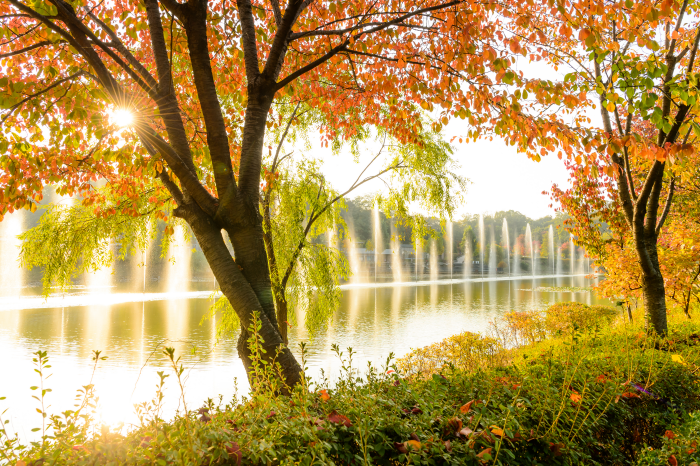
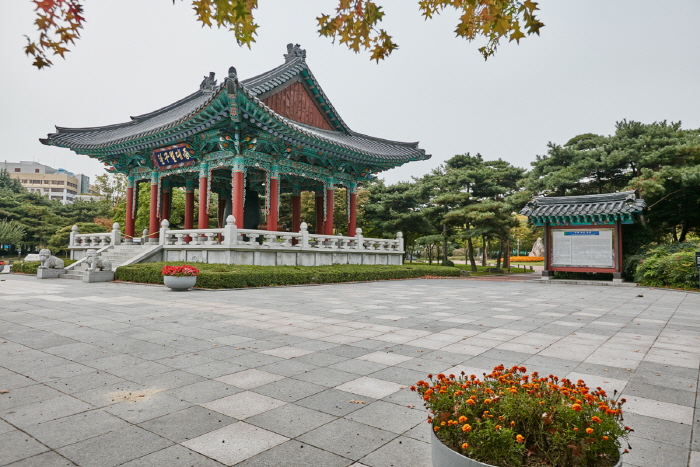
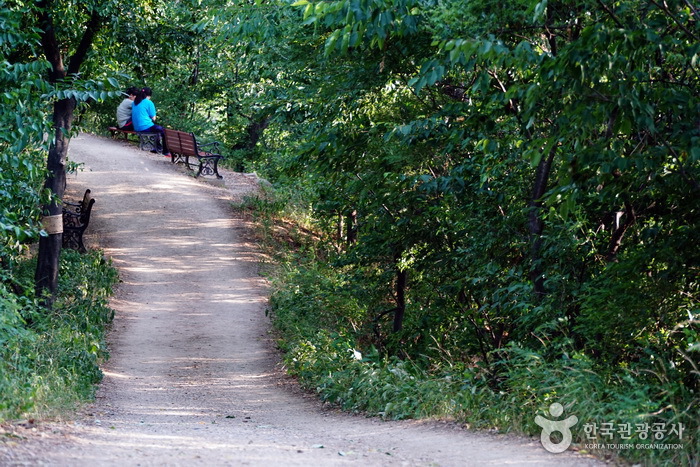
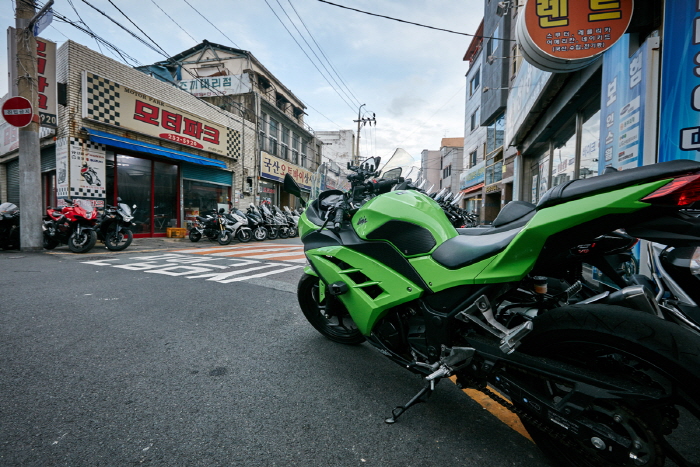
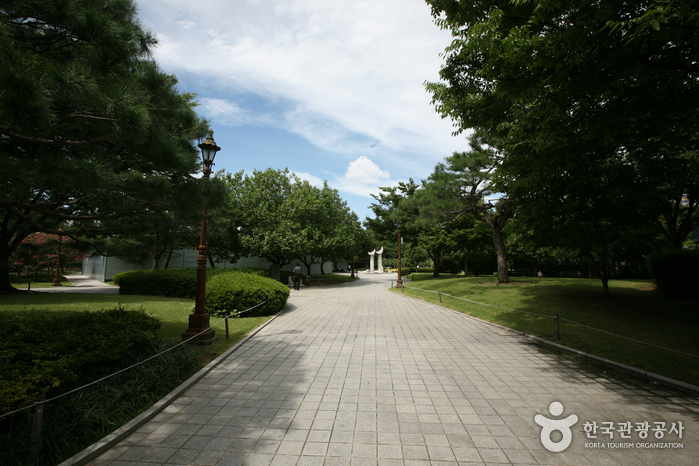
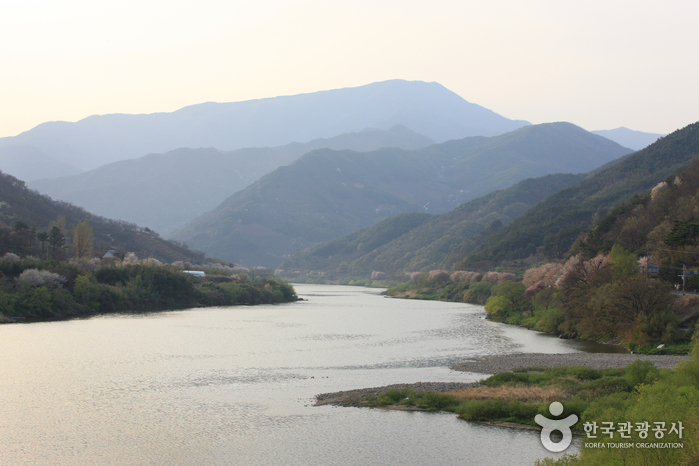
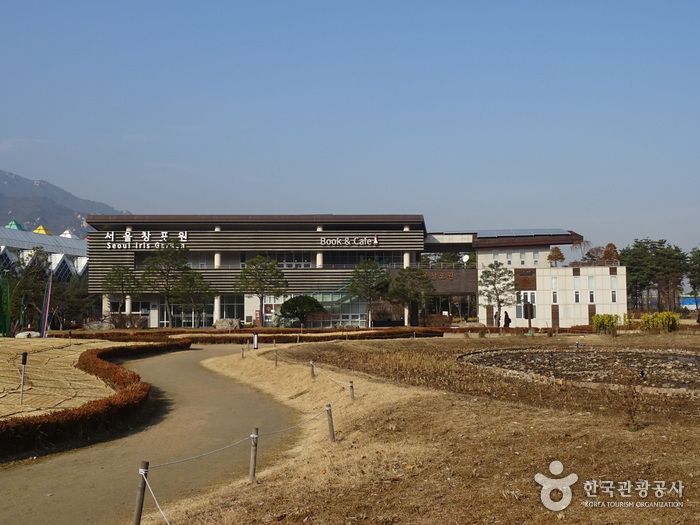

 English
English
 한국어
한국어 日本語
日本語 中文(简体)
中文(简体) Deutsch
Deutsch Français
Français Español
Español Русский
Русский